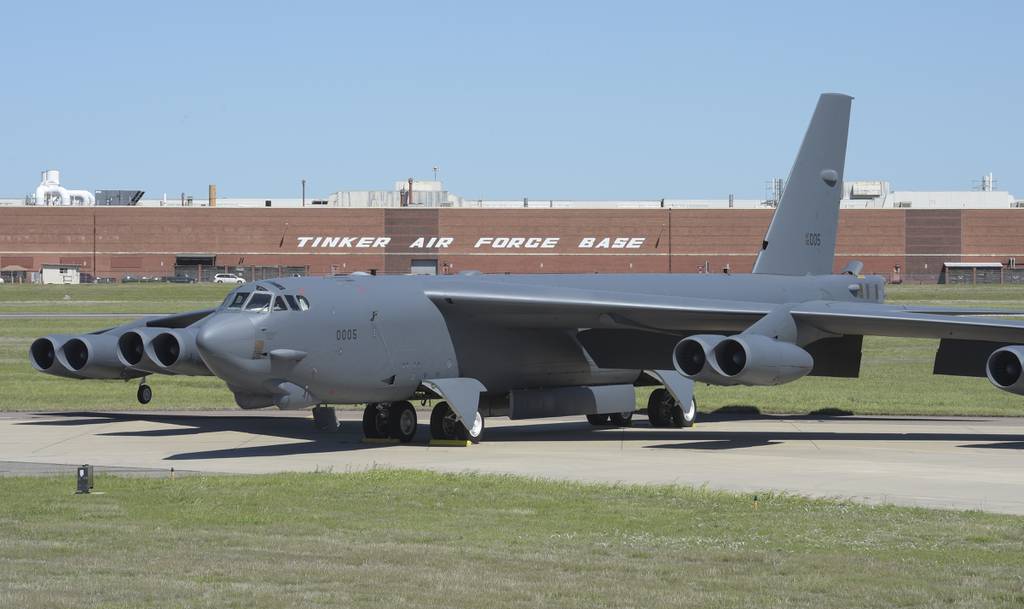
DAYTON, Ohio—The Air Force is working to make up for schedule delays and cost overruns on two central components of its plan to keep the B-52 flying into the 2060s.
The 1960s-era B-52, whose missions have ranged from nuclear alert during the Cold War to precision strikes against the Taliban, is the workhorse of the Air Force’s bomber fleet. The service is undergoing a $48 billion overhaul to keep it operating for another 30 to 40 years alongside its newest bomber, the B-21.
Completing those upgrades is “a no-fail mission,” Brig. Gen. Erik Quigley, who leads the Air Force’s B-52 program executive office, told reporters July 30 at the Air Force’s Life Cycle Industry Days conference in Dayton, Ohio. However, two critical elements of the modernization effort have accumulated significant delays and cost increases.
The first, called the B-52 Radar Modernization Program, has seen its cost estimate grow from $2.3 billion in 2021 to $3.3 billion as of March, according to Jason Knight, deputy senior material leader for the B-52.
Knight said in the briefing with Quigley that while the program is at risk of a critical cost breach — which would require it to notify Congress and craft a new cost and schedule baseline — it hasn’t reached that point yet.
A second effort, dubbed the Commercial Engine Replacement Program, is three years behind schedule, according to a June report from the Government Accountability Office. The program’s cost has increased by $2.5 billion in its latest projection, from $12.5 billion to $15 billion, according to Knight.
For both programs, the Air Force is working with Boeing, the lead integrator, to solidify schedules and new cost estimates, which means their latest projections could change soon. Quigley said the focus is on efficiency — finding ways to adjust requirements or rephase certain development milestones.
The program is working with Shay Assad, the former director of the Pentagon’s pricing office, to help with those cost and schedule discussions. Assad, who has a history of negotiating contracts in the department’s favor, recently helped the Air Force solidify a separate deal for Boeing’s E-7 Wedgetail aircraft.
“We’re leveraging his experience and expertise on how to become more efficient,” Quigley said. “He sat down and did a deep dive with our government team but also with Boeing to just kind of see how we can be more efficient with those business practices.”
That includes streamlining the program’s process for receiving and reviewing proposals and managing contracts, he added. For the engine replacement effort, the program is reexamining its requirements to see if they’re too restrictive or slowing down the design process.
On radar modernization, the service is planning to speed up the effort by purchasing long-lead parts. Quigley said the program has also shifted the criteria for some milestones, which should improve its schedule. Knight added that the program office has asked Boeing to put some pressure on the radar provider, RTX, to speed up its delivery timelines.
“We’re pretty confident that schedule slip is behind us, and now it’s just executing and looking for opportunities moving forward,” Quigley said.
Author: Courtney Albon
Source: DefenseNews



